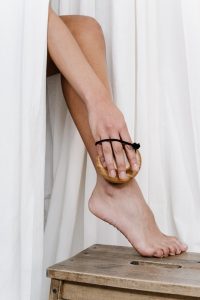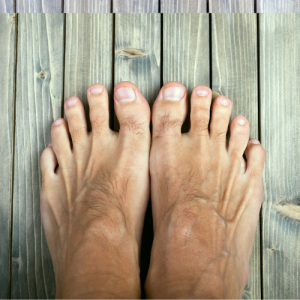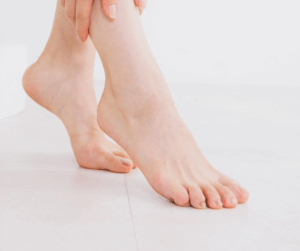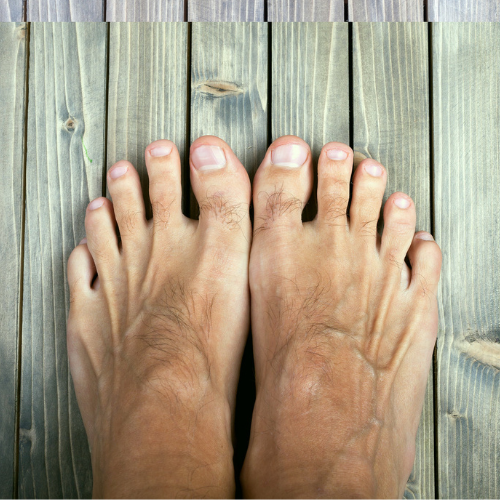 Though warts may seem like a common ailment that doesn’t often require emergency treatment, that doesn’t mean we should just learn to live with them. Some warts can be painful and unsightly, even if they might be harmless. If you’ve noticed a new suspicious growth or wart, it is always recommended that you get it examined by a professional. At our office, we are proud to offer various treatment options for patients diagnosed with plantar warts.
Though warts may seem like a common ailment that doesn’t often require emergency treatment, that doesn’t mean we should just learn to live with them. Some warts can be painful and unsightly, even if they might be harmless. If you’ve noticed a new suspicious growth or wart, it is always recommended that you get it examined by a professional. At our office, we are proud to offer various treatment options for patients diagnosed with plantar warts.
What is a Plantar Wart?
Plantar warts are non-cancerous growths that develop on the sole, heel, or ball of your foot. They often start as small, fleshy bumps that can be mistaken for a callus or corn.
There are two types of plantar warts: solitary and mosaic. Solitary warts are single warts that may grow and multiply over time if left untreated, while mosaic warts initially appear as a cluster of small warts.
Like most warts, plantar warts develop when you come into direct contact with the human papillomavirus, also known as HPV. There are over 100 different strains of HPV and can cause different types of warts to develop on other areas of the body.
You can contract the virus through small cuts or break in the skin when in contact with a contaminated surface. When the virus enters the body, it leads to an infection and develops a plantar wart. The virus survives best in warm, moist environments. Commonly infected areas include locker rooms, gym floors, pool decks, and public showers.
Symptoms
Warts sometimes begin as small spots that grow and develop into a rough raised bump. Since plantar warts grow on the bottom of your feet and are weight-bearing, a rough callus often forms on top of the wart. Patients do report feeling pain or tenderness when standing or walking for several hours. Some warts develop small black dots in the center, commonly called wart seeds, but they are tiny, dried clots in the blood vessels attached to the wart.
Treatment Options
Warts can be resistant to treatment as they survive by being connected to blood vessels and often go unnoticed by your immune system as it is near the surface of your skin. Though some warts may disappear on their own, foot warts are notoriously stubborn. The pressure of walking on them pushes the infection deeper into the skin making it harder to reach.
- At-Home Treatment- At-home and over-the-counter treatments include creams, patches, non-prescription freezing medication, and even duct tape. These options may work for minor cases, but we always recommend coming into our office for a consultation so we can accurately determine what kind of wart you have and what the best treatment options are for your needs.
- In-Office Treatment- As podiatrists, we are able to safely remove your wart with minimal damage to healthy skin cells in both minimally invasive and non-invasive treatment methods. Common treatment options include:
Cryotherapy – Using liquid nitrogen, your doctor will apply the chemical to your wart. This causes a blister to form as the cells are burnt and the blood supply cut off, killing the infection. After a week or so, the dead skin will slough off. This treatment can be painful like a minor burn, so your doctor may recommend administering a numbing agent to the area.
Electrocautery– With electrocautery, an electric needle is used to remove it surgically. Both the virus and the wart are treated. Before the procedure, the area is numbed.
Laser Therapy– Laser removal is a more highly effective, minimally invasive, and speedy treatment option. A high-powered laser cuts off the blood supply from the wart while eliminating the virus from your body. After treatment, the wart dies and sloughs off within a week.
Salicylic Acid– Similar to chemical peels, salicylic acid works by removing layers of your wart at a time. This topical medication is a stronger dose than products that can be bought over-the-counter.
Depending on the severity of your wart or warts, multiple treatment sessions may be needed to completely remove the wart.
You can reduce your risk of developing plantar warts by wearing footwear in public areas. If you know someone who has a wart or if you have one, avoid touching it as it spreads easily from direct contact. Keep it covered until you can come into our office for your consultation. During your appointment, we will determine the type of wart you have, and which treatment option is best for your needs. For more information on plantar warts and our treatment options or to schedule an appointment, contact Foot and Ankle Centers today.







